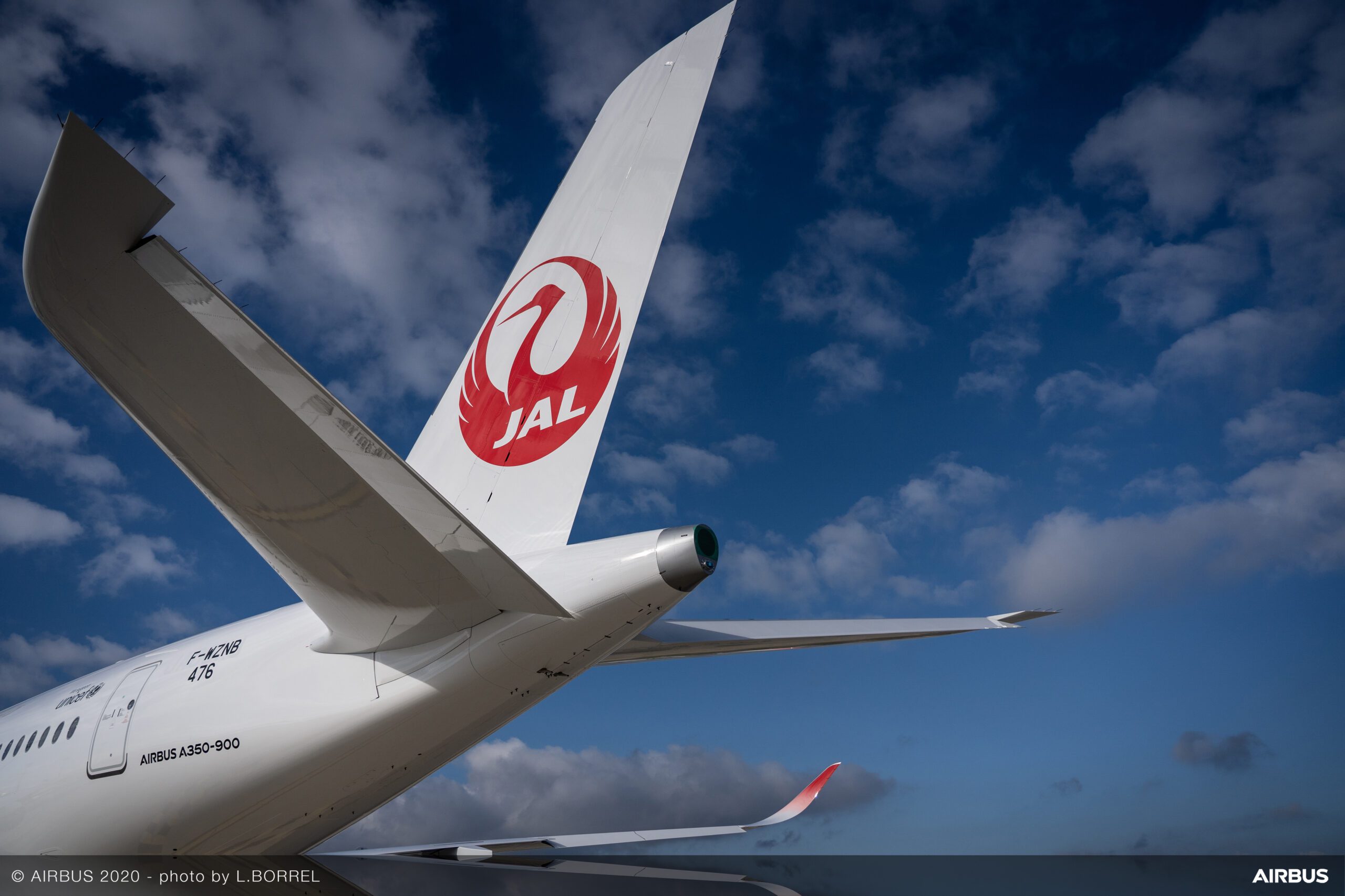
A350 900 Japan Airlines MSN476 On Ground scaled
Japan Airlines (JAL) turned around its fortunes in Q1 of FY2023, producing a net profit almost two-thirds that of the FY22 full-year profit. Both the full-service and its low-cost carriers benefitted from the strong recovery in domestic and international demand also seen at its rival All Nippon Airways (ANA). Japan Airlines turns in solid Q1 that almost equals last year’s profit.
Japan Airlines reported a ¥23.063 billion net profit attributable to shareholders for the April to June quarter, this first in FY23, compared to a ¥-19.583 billion loss in the same period in 2022. By comparison: the full-year 2022 profit was ¥34.4 billion. The operating profit was ¥30.855 billion versus ¥-30.267 billion a year ago.
The main difference is in the revenues, which totaled ¥381.4 billion this Q1 compared to ¥268.9 billion last year. Passenger revenues were ¥283 billion versus ¥153.7 billion. Other revenues, including the Mileage loyalty program and cargo, were lower to ¥98.6 billion from ¥115.1 billion.
Operating expenses increased to ¥353.1 billion from ¥303.1 billion, with fuel, salaries, and other operating expenses all higher year over year. However, at 16.5 percent, expenses were lower than the 36.8 percent increase in production volume year on year thanks to what the airline describes as “robust cost control.” In April, the group welcomed 2.000 new employees, the first time since the pandemic that it hired new staff. JAL continues the recruitment in order to be prepared for future shortages due to the retirement of older staff.
JAL’s EBITDA margin improved significantly to 17.9 percent from 5.4 percent and even outperformed 2019 levels when the margin was 17.2 percent. The cash flow from operating activities reached ¥123.6 billion, with free cash flow at ¥88 billion.
More passengers
JAL generated ¥147.5 billion in international passenger revenues, up from ¥62.4 billion, as it carried 1.6 million passengers versus 729.000 in the same period of 2022. The carrier sharply increased capacity/available seat kilometers by 165.7 percent to 11.8 million. Although better than forecasted, passenger demand was at only 65 percent of 2019 levels and is growing slowly, with 67 percent expected this Q2. Revenues per passenger were 75 percent higher compared to 2019 levels and outpaced the initial forecast of 63 percent. The load factor improved to 76.6 percent from 67.6 percent.
Domestic revenues grew to ¥122 billion from ¥88 billion in Q1 2022 thanks to 8.6 million passengers carried, up from 6.1 million. ASKs were up 106.4 percent to 8.7 million. Passenger demand was at 93 percent of pre-pandemic levels and should reach 94 percent in Q2. Revenues per passenger were up only four percent over 2019 but were better than the initial forecast of 0 percent. The load factor was up to 74.2 percent from 55.8 percent.
While the capacity of international cargo in tonnes was up by 17.6 percent to ¥1.052 billion, revenues per tonne kilometer were down by 13.4 percent to 631 million and actual revenues by 53.7 percent to ¥26.4 billion. Demand was the strongest between Asia and North America, but like ANA, JAL suffered from a slump in semiconductors and automotive parts.
Domestic cargo saw a 0.9 percent increase in revenues to ¥4.9 billion, with revenues per tonne kilometer up by 8.5 percent to 69 million at a 7.4 percent higher capacity of 400 million.
ZIPAIR margin goes up
Long-haul low-cost subsidiary ZIPAIR reported a strong operating margin of fifteen percent thanks to higher aircraft utilization and increased seat numbers. The carrier generated ¥11.5 billion in passenger revenues, up from ¥2.0 billion in Q1 last year as it carried 244K passengers compared to 53K. Capacity/ASK was up by 74.8 percent to 1.7 million. The load factor reached 77.9 percent, up from a low 27.4 percent last year. ZIPAIR started services to San Francisco in June (its third US West Coast gateway next to Los Angeles and San Jose) and to Manila in July, expanding its international network.
JAL’s other low-cost subsidiary Spring Japan earned ¥1.7 billion in revenues, up from ¥1.2 billion. Passengers carried almost quadrupled to 146K from 42K last Q1, while ASKs more than doubled to 206 million. The load factor was up to 64 percent from 38.5 percent. The reopening of China contributed to the better results of Spring, which has China as its main market. No individual results are shared for Jetstar Japan.
Outlook
Japan Airlines is positive for its outlook, with both international and domestic demand looking strong as it has entered the second quarter. “JAL aims to maximize volume, particularly between Asia and North America, by utilizing both their own resources and those of other companies.” In the next summer season, JAL will launch a service from Tokyo Haneda to Doha (Qatar) “to open a new gateway to Europe, Africa, and South America.” ZIPAIR also intends to build on the strong overseas demand.
The group ended June with ¥716 billion in liquidity and an unused credit line of ¥150 billion. Interest-bearing debt stood at ¥929.8 billion. Fuel and currency fluctuations are both hedged at 35 percent this financial year and at twenty percent for FY24. The full-year guidance is unchanged and includes a net profit of ¥55 billion, revenues of V1.658 billion, and an EBIT of ¥100 billion.
JAL operated 210 aircraft by the end of June, down three compared to Q1 2022, as it retired two Boeing 777-200ERs and one 787-8. ZIPAIR operated twelve aircraft, one more than last year as it inducted one 787-8. This coming winter season. JAL will introduce its new flagship, the Airbus A350-1000 onto the Haneda-New York route.
Views: 28





